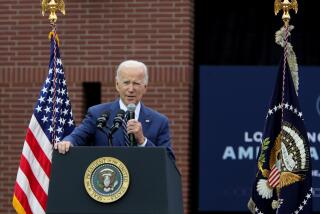Talk to Your Doctor About Rising Costs of Medication
- Share via
Q. I am retired on an income of $493 per month. I’m lucky I go to a lunch program, where I help by waiting on tables. I also volunteer at the library because helping others makes me feel good. But I worry about my drug bills.
I have a neighbor who cut down on her blood pressure pill because she could not afford to take it three times a day. Her doctor does not know it.
I’m sure my doctor doesn’t have the faintest idea I spend over one-fourth my monthly income on medicine. I try to be independent, but it gets very difficult with the rising cost of drugs. Month by month the little savings I have are being depleted to pay for my medicine.
Besides my seven heart pills per day, I have to take Carafate for ulcers ($44 for a two-week supply) and also Zantac for heartburn. I called three drugstores in my neighborhood. The prices ranged from $62.94 to $83.95 for 60 pills. Why is there so much difference between pharmacies?
A. We get so upset when we hear about someone like yourself struggling valiantly to make ends meet.
The American Association for Retired Persons surveyed the country and found extraordinary variation from one store to another and even from state to state.
We love mom and pop pharmacies because they often offer personalized service. But such independent drugstores may have higher overhead and costs that get passed on to the customer.
When someone has to skip pills to make ends meet, it becomes crucial to shop comparatively. Don’t just assume the chains will be cheaper, though. People don’t realize they sometimes can negotiate with a pharmacist, who may be willing to match the lowest price.
It’s also time for a candid talk with your doctor about your finances. He may be able to prescribe less expensive alternatives.
Q. I heard someone talking about children who were born in the ‘60s or ‘70s needing another measles shot because of an outbreak of measles among teen-agers. Is this true?
A. A measles epidemic in this country last year hit inner-city preschoolers and college students hardest. As a result, the American Academy of Pediatrics hopes to get more toddlers vaccinated at 15 months, and now recommends that kids get a measles “booster” when they enter middle school or junior high. Young people may soon be required to prove they’ve had two measles vaccinations before they’ll be allowed into college or technical school.


